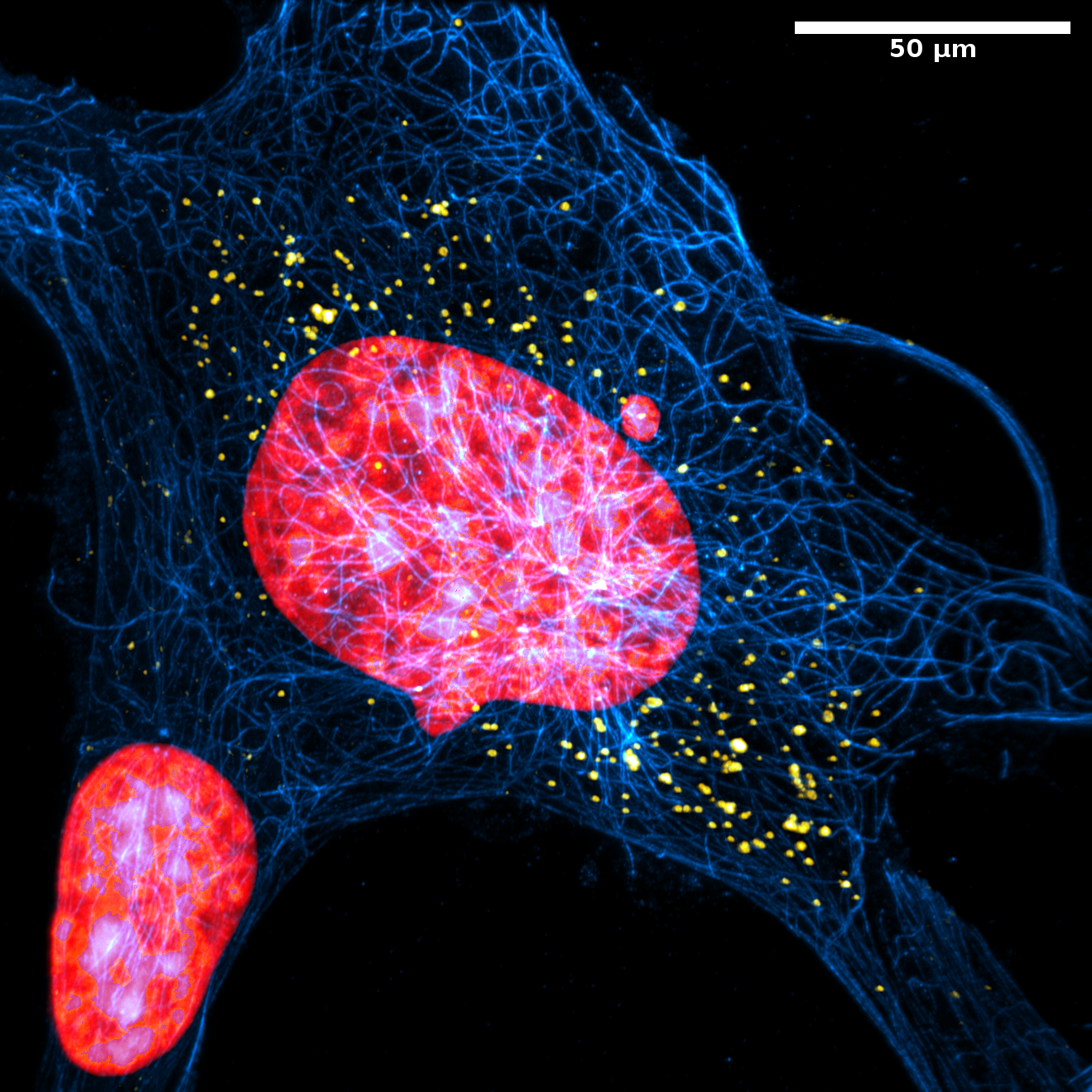
Shedding light on exceedingly rare biological events.
Driven By Biology.
The Dean Lab aims to develop and apply cutting-edge microscopy instrumentation and analyses to gain insight into otherwise intractable biological problems . As part of a National Cancer Institute Cellular Cancer Biology Imaging Research Center, we seamlessly collaborate with leading scientists to build scalable solutions that advance our knowledge of early metastatic colonization events.
As a member of a National Institutes of General Medical Sciences Biomedical Technology Development and Dissemination Center, we make advanced optical probes, light-sheet microscopes, and time-series analysis software available to diverse users internationally. At UTSW, we work with both basic and clinical scientists to improve our understanding of clinically relevant biological processes. Ultimately, we strive to generate a collaborative ecosystem, whereby advances in microscopy inspire new biological questions, which in turn drive the development of new and biologically motivated imaging techniques.
We are located in the Cecil H. and Ida Green Department of Systems Biology, and the Lyda Hill Department of Bioinformatics at UT Southwestern Medical Center,
Research
Autonomous Microscopy
We are developing a series of self-driving microscopes that leverage cutting-edge computer vision routines to adaptively image diverse specimens.
Molecular Multiplexing
To increase the molecular information content of high-resolution fluorescence microscopy, we are developing custom instrumentation that integrates spectral unmixing and cyclic immunofluorescence.
Content Rich Histopathology
The foundation of modern pathology is H&E imaging of thinly sectioned (5 microns) formalin-fixed paraffin-embedded specimens. To build upon this, we are developing a high-throughput microscope capable of imaging cm-scale specimens with 300 nm isotropic resolution.
Funding
-
Cancer Cell Imaging Core at UT Southwestern Medical Center
The CCIC will streamline comprehensive tissue imaging workflows—from antibody validation and sample clearing to expansion microscopy at ~30 nm resolution and cyclic multiplexed imaging of ~30‑µm sections—for a more complete view of the tumor microenvironment. It will also enable live imaging on spheroid cultures for physiologically relevant drug studies and automate operations (including robotic cell retrieval) for subsequent orthogonal analyses such as mass spectrometry. By collaborating with spatial biology cores and integrating in-house image analysis pipelines into a cloud-based, no-code environment, the CCIC will provide end-to-end, high-resolution imaging and data analysis for diverse biomedical applications.
Role: Principal Investigator -
Imaging mechanisms of metastatic tumor formation in situ
An application to establish a cancer cell imaging program that aims to probe the mechanisms of metastatic tumor formation in the context of the host environment. Proposed work establishes novel microscopy with unprecedented resolution while maintaining sufficient experimental throughput to discover the relevant metastasis driving processes at the single cell level.
Role: Principal investigator.
-
UTSW-UNC Center for Cell Signaling Analysis
The proposed Biomedical Technology Development and Dissemination Center aims to consolidate and distribute imaging-based technology for the study of cellular signals. The Center will combine computer vision, light-sheet microscopy, and advanced imaging probes to visualize, control, and model molecular activities at the level of microns and seconds. The technology will be tested and refined in diverse biological systems and disseminated to the greater scientific community in partnerships with microscopy core facilities and established distribution platforms (Addgene, GitHub, ImageJ/Fiji, Applied Scientific Instrumentation).
Role: Principal investigator.
-
Integrated visualization, control, and analysis of GEF-GTPase networks in living cells
The goal of this project is to develop comprehensive analytical imaging technology to examine GEF-GTPase interactions in diverse cancer cell functions. Specifically, our team will produce biosensor/optogenetic molecular imaging tools, multiplexing capabilities, and image analysis/modeling approaches necessary to shed light on the network topology of nonlinear, spatiotemporally controlled signaling pathways for which GEF-GTPase interactions are prototypical.
Role: Principal Investigator -
UT Southwestern Simmons Comprehensive Cancer Center
The Simmons Cancer Center is organized as a matrix center that integrates cancer research, clinical cancer care, and cancer control outreach across the University of Texas Southwestern Medical Center and its affiliated hospital systems, UTSW Health System, Parkland Health and Hospital System, Children’s Medical Center of Dallas, and UTSW Moncrief Cancer Institute in Fort Worth.
Role: Other.
-
Improving Focused Ultrasound Mediated Viral Gene Therapy Delivery
This project will develop and test a non-invasive, targeted approach to deliver gene therapy to white matter tracts & white matter hubs to treat neurologic and psychiatric diseases. The broader goal of the project is to improve the treatment of brain circuit diseases using these tools.
Role: Co-Investigator -
Mechanisms and Consequences of PAX2 Inactivation in the Initiation of Endometrial Carcinogenesis
This project aims to investigate PAX2 silencing, the most known molecular alteration driving endometrial cancer formation and growth. By gaining a deeper understanding of PAX2 silencing and its functional consequences, we hope to unlock new insights with fundamental implications for future efforts geared towards early detection, diagnosis, prevention, and treatment of this underestimated malignancy of women.
Role: Co-Investigator